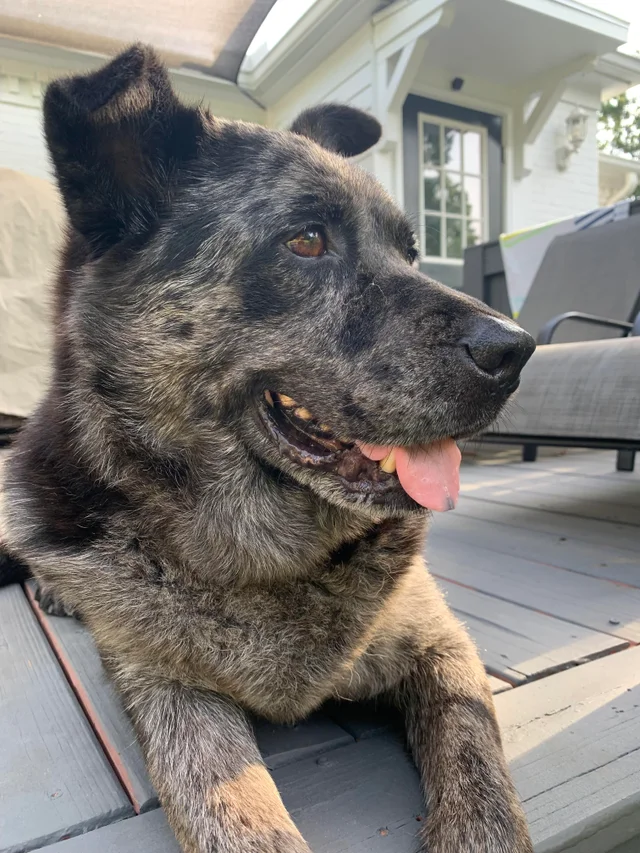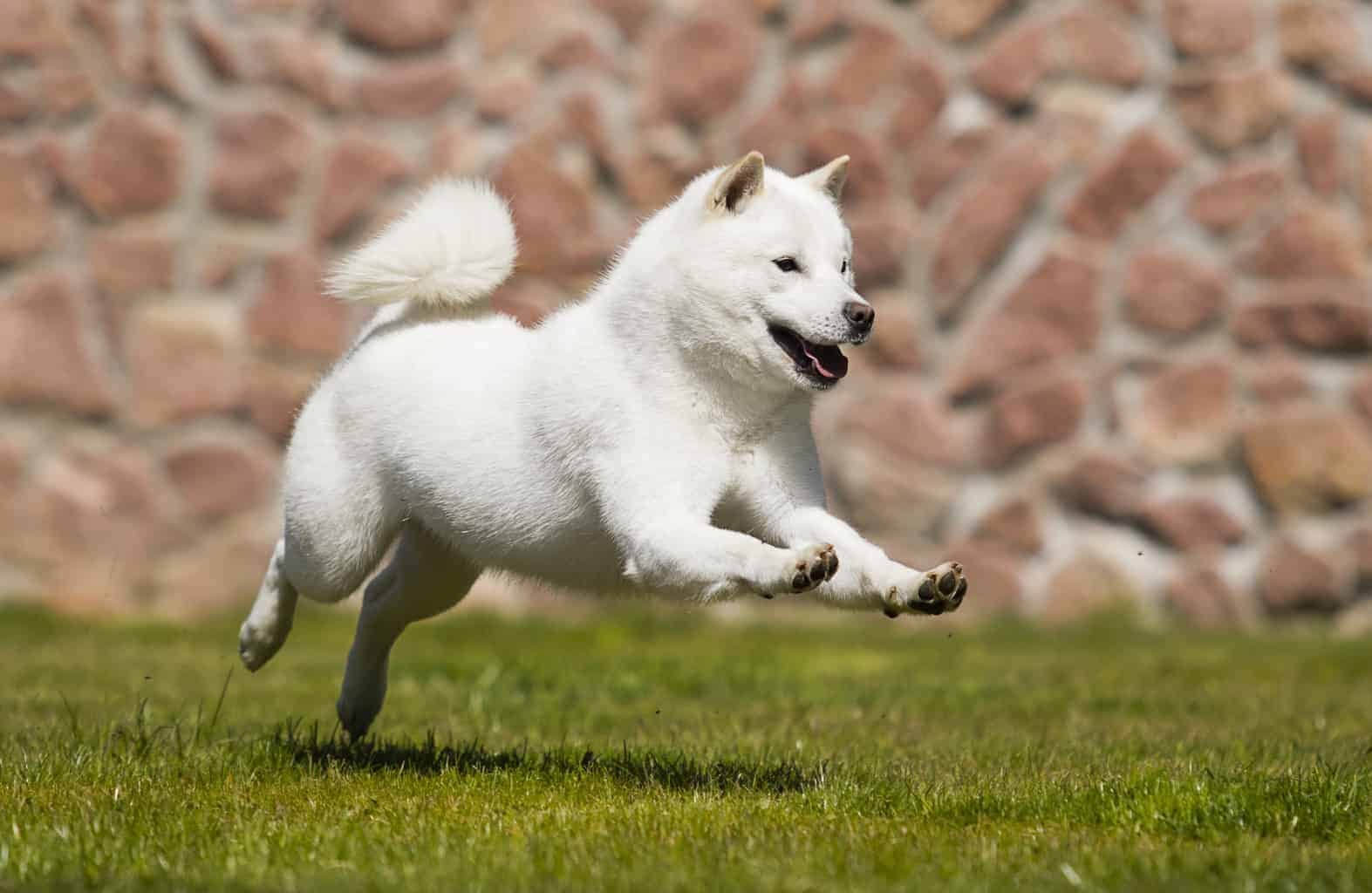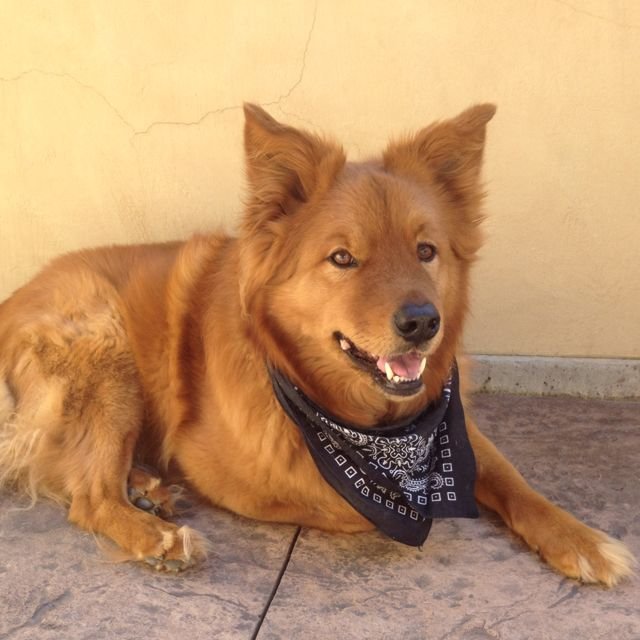Australian Cattle Dog Herding Requirements and Training Tips
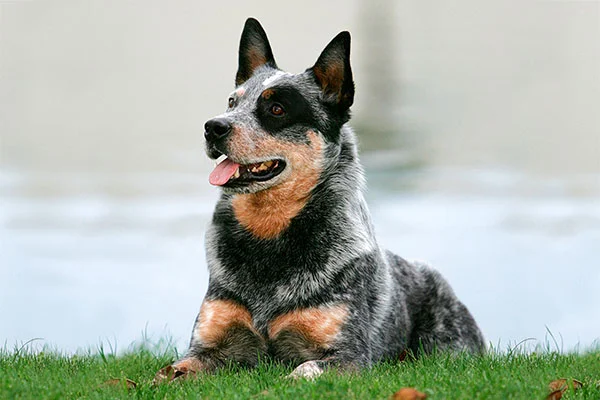
If you’re thinking of getting an Australian Cattle Dog, or already have one, you may be wondering about the best way to go about herd training. In this blog, we’ll cover all you need to know about Australian Cattle Dog herding requirements and training tips.
The Australian Cattle Dog, also known as the “aussie cow dog”, is a breed of herding dog that was developed in Australia for the purpose of driving cattle. They are known for their intense stare, or “eye”, which is used to control livestock. Cattle dogs are highly intelligent and trainable, but they can also be stubborn and headstrong.
The first step in training your cattle dog is to socialize them from a young age. This means exposing them to different people, places, and situations so that they learn to cope with new environments and experiences. It’s important to start socialization early, before your puppy is 16 weeks old. After that age, it becomes more difficult for puppies to learn to trust new people and things.
If you want your cattle dog to be a working dog on the farm or ranch, there are a few things you’ll need to keep in mind during training. First of all, these dogs need a lot of exercise – at least an hour a day. They also need plenty of space to run and play. A fenced-in yard is ideal, but if you don’t have one, you’ll need to take your dog for walks or runs in safe areas.
Cattle dogs are bred to work independently, so they aren’t the best choice if you want a dog that will always be by your side. That said, they can be trained to be loyal and loving family pets if you give them the attention and exercise they need.
As far as herding requirements go, your cattle dog will need to have some basic obedience training before you start working with livestock. This includes commands like “sit”, “stay”, “down”, and “come”. You should also teach your dog how to walk on a leash before taking them out into a pasture with cows or other animals.
The Australian Cattle Dog: An Owner's Guide to a Happy Healthy Pet (Your Happy Healthy Pet, 61)
When you’re ready to start training your cattle dog for herding, there are a few things you’ll need: a whistle, a flag (or anything that will wave or flap in the wind), and some patience! Start by teaching your dog the basic commands using the whistle and flag.
Once they understand what you want them to do, you can begin working with livestock. Start with just one or two animals at first, and increase the number as your dog gets more confident and comfortable herding.
Keep in mind that herding is instinctive for cattle dogs, so they may not need much training to start doing it. However, it’s important to continue working with them on a regular basis so that they don’t get bored or frustrated. Herding is hard work, so make sure you give your dog plenty of breaks – especially in hot weather. And always provide plenty of praise and treats when they do a good job!
Essential Herding Requirements for Australian Cattle Dogs
If you’re considering getting an Australian Cattle Dog, or already have one, you need to be aware of the special requirements for their care. Aussie Cattle Dogs are a working breed, originally bred to herd cattle in Australia. They are still used for this purpose on many farms and ranches today.
The Australian Cattle Dog is a high-energy breed that needs a lot of exercise. A minimum of two hours of vigorous exercise per day is essential, though more is better. If you don’t have a farm or ranch where your dog can work, you’ll need to find other ways to give them the exercise they need. Playing fetch, going for long walks or runs, and hiking are all great ways to tire out an Aussie Cattle Dog.
Like all working dogs, Aussie Cattle Dogs need a job to do. Without a job, they can become bored and destructive. Herding is the ideal job for an Aussie, but not everyone has cattle to herd. If you don’t, you’ll need to find another outlet for your dog’s herding instinct. One option is to enroll them in herding lessons or trials. Alternatively, you can give them a “job” around the house such as asking them to help you bring in the groceries or herd the kids.
Aussie Cattle Dogs are intelligent dogs that are quick to learn. They excel at obedience and agility training. Many also enjoy activities such as nosework and tracking. Training provides mental stimulation for your dog and is a great way to bond with them.
Australian Cattle Dogs are strong, independent dogs. They need firm, consistent training from a young age. Aussies can be stubborn and willful, but they are also very loyal and loving dogs. With the right training and socialization, they make great family pets.
Socialization Requirements for Working Cattle Dogs
One of the most important things you can do for your working cattle dog is to make sure they are properly socialized. Socialization is the process of acclimating your dog to different people, places, and situations so they can learn to cope with them in a healthy way.
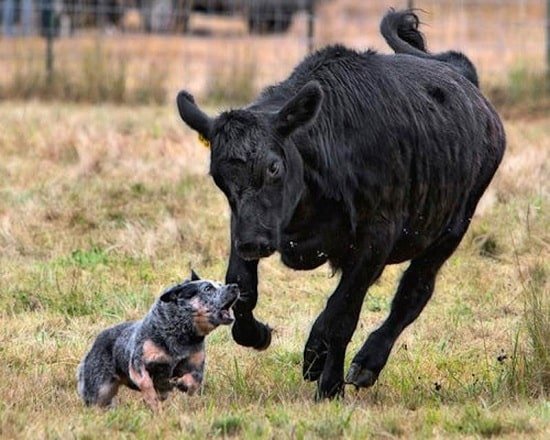
Without socialization, your cattle dog may become fearful or aggressive when confronted with new people or situations, which can make them dangerous to be around. Additionally, a lack of socialization can lead to behavioral problems like separation anxiety or destructiveness when left alone.
The good news is that socialization is relatively easy to do, and even a few simple exposure experiences can make a big difference in your dog’s comfort level with new things. Here are some socialization tips for working cattle dogs:
Introduce your dog to as many people as possible, including children, seniors, and people of all ethnicities. Dogs who are comfortable around people are less likely to bite or attack, even if they’re feeling threatened.
Take your dog to different types of places, including public parks, pet stores, veterinary offices, and even crowded places like fairs or sporting events. The more places your dog experiences, the more flexible they’ll be when it comes to new environments.
Expose your dog to different sounds, smells, and textures so they can get used to novelty. This can include things like opening umbrellas, using the vacuum cleaner, or walking on different types of surfaces.
Make sure your dog has plenty of opportunities to play and interact with other dogs. This is important for both puppies and adult dogs, as it helps them learn how to interact appropriately with other canines.
If you have a working cattle dog, it’s especially important to socialize them early and often. Cattle dogs are bred to work alongside humans, so they need to be comfortable around people in order to do their job effectively. By socializing your dog, you’re helping them reach their full potential as a working cattle dog.
Training Tips to Develop Herding Skills
When training your Australian cattle dog to develop herding skills, it is important to keep a few things in mind. First, herding is a instinctual behavior for these dogs, so you will need to be patient and understanding as you work with them. Secondly, as with all forms of training, positive reinforcement is key to success. With these things in mind, here are a few tips to help you get started:
1. Start with basic obedience commands. This will help your dog learn to listen to you and follow your commands. It is also important to establish yourself as the leader of the pack, which will be helpful when herding.
2. Use a livestock simulator. This can be anything from a ball on a rope to a stuffed animal. Start by teaching your dog to chase and fetch the simulator. Once they have mastered this, you can start working on getting them to move the simulator around.
3. Use visual aids. If you are having trouble getting your dog to understand what you want them to do, try using some visual aids. For example, you can use a cardboard cutout of a sheep or cow to help them understand what you want them to do.
4. Be consistent. As with all training, consistency is key. If you are inconsistent with your commands or rewards, your dog will become confused and the training will take longer.
5. Have patience. Training your dog to herd can be a long and frustrating process. However, if you are patient and consistent, you will eventually see results.
Building Confidence with Herding Exercises
- Aussie cow dogs are amazing animals. They are bred to work with livestock, and they have a natural instinct to do so. However, this does not mean that they are always confident in their abilities. Just like any other animal, they can sometimes lack confidence and need a little help to feel secure in their abilities.
- One of the best ways to help an aussie cow dog build confidence is through herding exercises. These exercises give the dog a chance to practice their natural instincts and build up their confidence in their abilities.
- There are a number of different herding exercises that you can do with your aussie cow dog. One of the most basic exercises is simply working on recalls. This helps the dog to understand that they need to come back to you no matter what is going on around them.
- Another great exercise is to set up a course for the dog to follow. This can be done with cones or other objects that you have around the house. The dog will need to follow the course and avoid any objects that are in their way. This will help them to learn to focus and pay attention to their surroundings.
- yet another excellent exercise is to have the dog work with livestock. If you have access to sheep or cattle, this is a great way for the dog to practice their herding instincts. This is also a great way for the dog to bond with the livestock and build up their confidence.
- Whatever exercises you choose to do with your aussie cow dog, make sure that you are patient and consistent. It may take some time for the dog to build up their confidence, but with patience and perseverance, they will eventually be confident in their abilities.
Key Distractions and How to Handle Them with cattle dog
If you’re new to Australian cattle dog herding, you may be wondering what the key distractions are and how to handle them. Here’s a quick overview of some of the most common distractions and how to deal with them.
One of the most common distractions is other animals. If you’re working with cattle, you’ll need to be extra careful around other animals like sheep or chickens. If possible, try to keep them away from the cattle. If they do get close, make sure to keep your dog under control so that it doesn’t chase after them.
Another common distraction is people. If you’re working in an area where there are people nearby, make sure to keep your dog under control. You don’t want it to start chasing after people or getting too excited. If possible, try to find an area where there aren’t many people so that you can avoid this issue.
The last common distraction is vehicles. If you’re working near a road, make sure to keep your dog away from vehicles. You don’t want it to get hit by a car or get too excited and chase after one. If possible, try to find an area where there aren’t any vehicles so that you can avoid this issue.
If you’re having trouble with distractions, try to find an area where there aren’t many animals, people, or vehicles. This will make it easier for you to focus on your work and keep your dog under control.
Different Types of Herding Commands
Aussie cow dogs are different from other dogs in that they are bred and trained to work with livestock. This makes them an invaluable asset on any farm or ranch. Different types of herding commands are used to direct the dogs in their work.
The most basic herding command is “come-bye.” This is used to tell the dog to move around the livestock clockwise. “Away to me” is the opposite command, and is used to tell the dog to move counterclockwise. “Stand” is another important command, and is used to tell the dog to stop and wait.
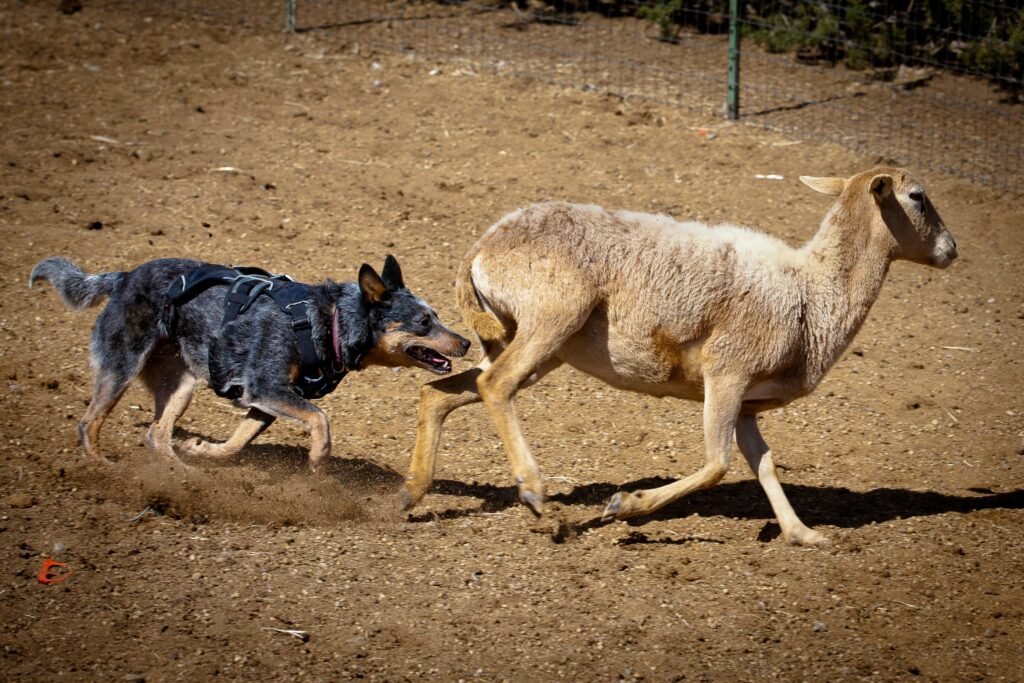
There are also commands that are used to direct the dog to specific animals. “That’ll do” is a general command that tells the dog to stop working and come back to the handler. “Get back” is used to tell the dog to move away from the livestock. “Leave it” is used to tell the dog to ignore a specific animal and continue working.
Aussie cow dogs are an indispensable part of any farm or ranch operation. Their versatile training makes them able to handle any herding situation that comes up. With the proper commands, they can make quick work of even the most stubborn livestock.
Improving Focus and Sustained Attention For Cattle Dog
If you want your Australian cattle dog to succeed at herding, you need to be able to help him sustain his focus and attention. Here are some tips to improve your cattle dog’s focus and attention span:
1. Use positive reinforcement. Australian cattle dogs are highly intelligent and responsive to positive reinforcement. When your dog exhibits the desired behavior, such as sustained focus and attention, be sure to praise him enthusiastically.
2. Keep training sessions short and sweet. Cattle dogs are very enthusiastic learners, but their attention span can be limited. For this reason, it’s important to keep training sessions short and sweet. Otherwise, you run the risk of your dog becoming bored or frustrated.
3. Make it fun! Herding is a serious business, but that doesn’t mean training can’t be fun. Use your imagination to come up with creative ways to keep your dog’s attention focused on the task at hand.
4. Be consistent. It’s important to be consistent with your commands and expectations when training your cattle dog. If you’re inconsistent, your dog will become confused and will be less likely to sustain his attention and focus.
5. Be patient. Like all dogs, Australian cattle dogs need time to learn and master new skills. Be patient with your dog and don’t get frustrated if he doesn’t seem to be progressing as quickly as you’d like. He’ll get there eventually!
Problem-Solving Techniques for Your Australian Cattle Dog
There are a number of different problem-solving techniques that you can use for your Australian Cattle Dog. The most important thing is to remain calm and take your time. If you rush into a situation, you may make the problem worse.
One of the first things you should do is try to understand what is causing the problem. This can be difficult, especially if your dog is acting out of character. If you can figure out the root cause of the problem, you will be better equipped to solve it.
Once you understand the problem, you can start to work on a solution. There are a number of different techniques that you can use, and it may take some trial and error to find the one that works best for your dog.
One popular technique is positive reinforcement. This involves rewarding your dog for good behavior, rather than punishing them for bad behavior. For example, if your dog is chewing on furniture, you can give them a treat when they chew on their toy instead.
Another technique is called desensitization. This involves slowly exposing your dog to the thing that is causing them anxiety or stress. For example, if your dog is afraid of loud noises, you can start by playing soft music and gradually increase the volume over time.
There are many other problem-solving techniques that you can use for your Australian Cattle Dog. The most important thing is to remain calm and take your time. If you rush into a situation, you may make the problem worse.
Rewards and Reinforcement Strategies
When it comes to correcting unwanted behavior in our dogs, we often think of punishment as the go-to solution. But what if there was a better way?
Punishment may be effective in the short-term, but it can often lead to further behavioral problems down the road. That’s why many dog trainers and behaviorists now prefer to use rewards and reinforcement strategies instead.
So what’s the difference between punishment and reinforcement? And what are some of the best ways to use them? Let’s take a look.
Punishment is any action that is intended to decrease the likelihood of a behavior being repeated. For example, if your dog jumps on you and you push him off, you are using punishment.
The problem with punishment is that it doesn’t teach your dog what you want him to do instead of the unwanted behavior. And if not used correctly, it can lead to fear, anxiety, and aggression.
Reinforcement, on the other hand, is any action that is intended to increase the likelihood of a behavior being repeated. For example, if you give your dog a treat when he sits politely, you are using reinforcement.
There are two main types of reinforcement: positive and negative. Positive reinforcement is when you add something pleasant after a behavior is displayed, such as a treat or a toy. Negative reinforcement is when you remove something unpleasant after a behavior is displayed, such as taking away the leash when your dog walks calmly by your side.
Both positive and negative reinforcement are powerful tools that can be used to shape your dog’s behavior. And when used correctly, they are much more effective than punishment.
So how do you know which reinforcement strategy to use? The best way to decide is to think about what your goal is.
If you want your dog to perform a behavior more often, you would use positive reinforcement. For example, if you want your dog to sit politely when greeting people, you would give him a treat every time he does it.
If you want your dog to stop performing a behavior, you would use negative reinforcement. For example, if you want your dog to stop jumping on you, you would turn your back and walk away every time he does it.
There are endless possibilities when it comes to using rewards and reinforcement strategies to shape your dog’s behavior. And the best part is that these strategies are gentle, effective, and long-lasting. So if you’re looking for a better way to train your dog, give rewards and reinforcement a try!
Resources to Help Further Develop Herding Skills
If you have a dog that is showing an interest in herding, there are a number of resources available to help you further develop those skills.
For starters, the Australian Cattle Dog and Queensland Cattle Dog Club of America offers a number of resources on their website. They have a list of recommended books, as well as articles on training and activities for herding dogs.
If you’re looking for some guidance on where to start with herding training, the book Herding Dogs: Progressive Training
-
The Australian Cattle Dog: An Owner's Guide to a Happy Healthy Pet (Your...
—
$13.90
$15.95 -
Herding Dogs: Progressive Training
—
$20.03
$23.99

